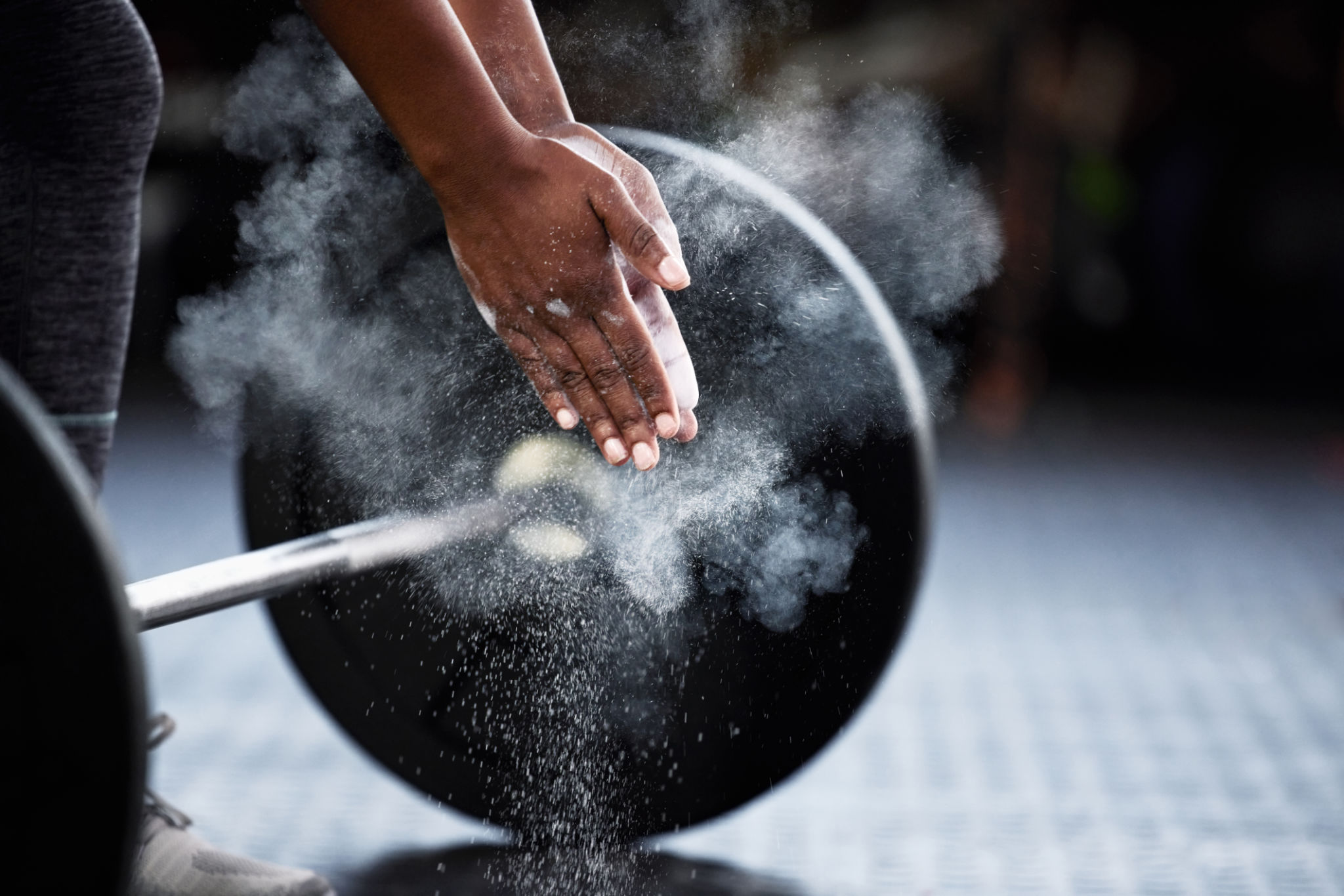The Ultimate Guide to Using Liquid Chalk for Weightlifting
Introduction to Liquid Chalk
Liquid chalk has become a popular choice among weightlifters for its convenience and effectiveness. Unlike traditional chalk blocks, liquid chalk comes in a bottle, reducing the mess and increasing ease of use. It's particularly useful in gyms where traditional chalk is banned due to the dust it creates.
One of the main benefits of using liquid chalk is its ability to enhance grip, which is crucial for lifting heavy weights. This guide will explore how to use liquid chalk effectively and why it might be the right choice for your weightlifting needs.

Benefits of Liquid Chalk
Liquid chalk offers several advantages over its powdered counterpart. Firstly, it provides a stronger, more consistent grip because it forms a layer on the skin that doesn't easily rub off. This can be particularly important in exercises like deadlifts or pull-ups where grip is essential.
Additionally, liquid chalk is more hygienic. In a shared gym setting, using your own bottle of liquid chalk prevents the spread of germs that can occur with communal blocks of chalk. Furthermore, it dries quickly, allowing lifters to move seamlessly from one exercise to the next without delays.
How to Apply Liquid Chalk
Applying liquid chalk is straightforward. Follow these steps for optimal results:
- Shake the bottle well to ensure even consistency.
- Squeeze a small amount onto your palm, about the size of a nickel.
- Rub your hands together, spreading the chalk evenly across your palms and fingers.
- Allow it to dry for a few seconds before beginning your lift.

When to Use Liquid Chalk
Liquid chalk can be used in various scenarios beyond just weightlifting. It's beneficial for other activities requiring grip strength, such as rock climbing, gymnastics, or CrossFit. Using liquid chalk during these activities can help maintain a secure grip on equipment, reducing the risk of injury.
For weightlifters, it's particularly useful during intense sessions or competitions where maintaining grip is critical. It can also be advantageous in humid environments where sweat might otherwise compromise grip.
Choosing the Right Liquid Chalk
When selecting a liquid chalk, consider factors such as the ingredients, drying time, and any additional features like antibacterial properties. Some brands offer liquid chalk with added essential oils or moisturizers to prevent skin dryness.

It's also wise to read reviews and perhaps try a couple of different brands to find the one that provides the best grip and comfort for you. Remember, the best liquid chalk is one that enhances your performance without causing irritation or discomfort.
Caring for Your Hands
While liquid chalk is great for grip, it can sometimes lead to dry skin if used frequently. To prevent this, incorporate regular hand care into your routine. Moisturizing after workouts and using hand balms can help maintain skin health.
If you notice any cracks or irritations developing, consider taking a short break from using chalk to allow your skin to recover. Hydrating from within by drinking plenty of water can also be beneficial for maintaining healthy skin.
Conclusion
Liquid chalk is an invaluable tool for weightlifters and anyone engaged in activities requiring a strong grip. Its convenience, effectiveness, and cleanliness make it a superior choice over traditional options. By following the tips outlined in this guide, you can maximize your performance and keep your hands healthy while lifting.
